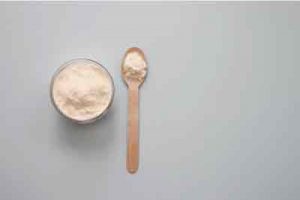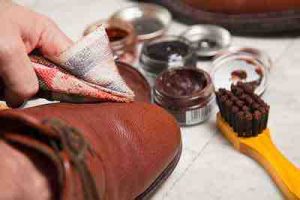Before we tackle the problem, let us deal with the cause so it doesn’t keep occurring.
Studying the parts of boots we have many parts like the shank, the heel counter, and others but we will be grouping them into three major parts so that it will be easy to understand and apply the methods below.
The major parts of your boots that squeaks are:
The upper
It is every part of the boot except the sole. Everything that covers the feet except the bottom of the shoes is defined as the upper. They can be made of multiple materials.
The insoles
They are also called footbeds or inserts and they are the part of the boots that are directly under the foot.
Some insoles are removable while they are just built-in.
Either way, they produce arch support, comfort, and adequate cushioning for the feet.
The soles
The soles are at the bottom of the shoes, you know the part that touches the floor. They can be thick or thin depending on the material used and style.
7 important tips to stop your boots from squeaking
There are many ways you can stop your boots from squeaking. Let’s begin with the simple ones, the ones that you do at home easily without incurring a cost.
I won’t just tell how to stop the squeaking with these methods but why it works.
- Use powder inside for boots
- Use Conditioning oil to soften your boots
- Fix everything about the soles and insoles
- Sun-dry your boots completely
- Leverage sandpaper and dryer sheets
- Wear ‘them’ boots till they shut up
- Try polish or waterproof spray
Use Powder

Baby powder, talcum powder, Ponds, Johnson, or any type of brand you want to use, just make sure it is powder.
This is the simplest and most popular method. You get it talcum or baby powder HERE.
For the upper
Before you start, remove the laces if your boots have any. Sprinkle a little powder on the boots. Gently spread all over with a tissue paper or handkerchief.
Don’t worry about your boots losing color or getting stained. You can wipe them after 3 minutes with a damp rag and dust them off with another rag.
Please remember that you should not do this with polish on it. You will ruin your boots.
If you are going to try the powder method, do it well before you polish them, never after.
For the insoles
First, get your powder. Put a little on your palm and rub around the inside of your boots.
If the insoles of the boots are removable, take them out before applying the powder if not go on with it.
To make sure you get all the corners, you can use a hankie or tissue paper.
Don’t worry about your boots getting stained, you can use a damp rag to wipe your boots and all the powder will come right off and still have an effect.
If you take out the insoles, put them back. Ta-da! They are ready. Yes, you don’t have to wait for 24 hours or something, at all. It works within minutes.
Why does it work? If there is any moisture trapped in the boots, the powder absorbs it and stops the squeaking.
The powder also reduces the friction between the insole and other parts of the boots. The only issue with this method is that it is temporary.
Use Conditioning oil

Anything you have has to be maintained or serviced so they don’t spoil. The same applies to boots. You will have to check them thoroughly.
This method of applying conditioning oil is most effective if your boots are new or it’s the upper part of the boots that are causing the squeaking.
For the upper
Since the leather and all its fibers are still getting used to themselves they will squeak as they flex and mold.
The conditioning oil will sort of soften them, make them more flexible, and most importantly stop the squeaking. What type of oil can you use?
Mink oil is the most recommended and it is good for leather. It waterproofs and conditions leather, and it absorbs quickly.
You can use jojoba oil or neatsfoot oil. Here is how you apply? Clean your boots thoroughly with a dry rag and hard-bristled brush.
After that add some of the oil to the boots and spread it with another rag. Ensure it is fully lubricated.
Repeat as many times as is needed. If you don’t have mink oil, get it here.
Fix everything about the soles and insoles
These two parts of shoes were mentioned above as the major parts of a boot that squeaks.
For soles
The soles will, with time and a lot of wear, get detached from the rest of the boot. When it does, fix it with good adhesive.
Now, it may seem easy but if you know you can’t handle it please give it to a cobbler to mend.
If you can get some good adhesive. Let me suggest Gorilla Glue, great for binding almost anything. Get a hard bristle brush and then take as much as you will need and slowly apply to the area you need to join.
Let me briefly warn you that using too much glue will get the glue all over, prevent the glue from getting everywhere, stick the wrong things, and be ineffective on the boots.
Give it a few seconds before you reattach the soles. If you are using Efostic gum, you will have to give it up to 5 minutes before joining them together.
Allow them to dry completely before you wear them. About that Gorilla glue, if you don’t know where to get it to click this link.
For insoles
If it is the insoles that are the parts squeaking it happens because the insoles are no longer perfect for the boots. Removable insoles are prone to this.
After washing they can lose their shape, stretch out, or maybe not fit Into the place like they used to.
If the insoles are still good but they keep slipping out of place, then you can keep them in place by carefully gluing them to the floor of the boots using the same method outlined above.
If they are worn or no longer fit, you will have to get new ones that fit perfectly or you will be stuck with the problem.
Just dry them completely

If you notice your boots squeak when they are wet, there is not much you can do but let them dry completely.
It’s like some manufacturing or material problem. It is just the way damp clothes smell unless they are dry. However, keep in mind that though leather is durable, it will wear and spoil quicker if it is constantly wet.
Too much moisture spoils leather. You may want to substitute those leather boots in the rainy season.
And it may be fun rocking that cowboy or bad teen look but don’t jump into puddles, stay away from moisture, and if they ever get wet, dry them completely.
Sun-drying or air drying will work best. Just in case, drying completely involves the inside of the boots too. You can use newspapers for the insides. They absorb moisture just fine.
All you have to do is scrunch up some ball of newspaper nice and thick big enough to touch all the corners of the toe box. Leave it in and wait for at least 3 hours.
This works for the upper, insoles, and soles.
Sandpaper and dryer sheets

Okay, this is getting more physical. Kidding! This method will be effective if the problem is from the soles. If your boots squeak on floors of any kind you will have to get dryer sheets.
Three or four sheets will be perfect. Rub a sheet on the soles of the boot to get residue like you trying to smoothen it.
Let the residue cover the soles. Don’t worry, the residue will stick to the soles. The residue provides a layer of lubrication that will stop the squeaking.
Repeat the process with fresh dryer sheets. If it squeaks on smooth cement or bad floors then the dryer sheet will not do the work. That’s when you need sandpaper. Fine sandpaper to be precise.
The process is the same as that of the dryer sheets. What happens is that the sandpaper will give the boots some grip they didn’t have.
It will make rough, reducing the friction that causes the squeaking noise. This method is also temporary so you will have to do this every time you want to wear it.
Wear ‘them’ boots till they shut up
May I say this only applies to new boots, thank you? With all the layers and layers of leather, the laces, and all the extra things on top that made them worthy for you, they are getting to know each other so they are talking to one another.
With time they will shut up. Does this sound silly? I am sorry. All I am asking you to do is to wear them. In a few weeks, they will stop squeaking if there is no other cause of the squeaking.
The leather will be quiet soon. The only thing you need here is patience.
Try polish or waterproof spray

Those dry leather boots may just need a bit of polish. Polishing your boots will do what the conditioning oil will do for you.
They will soften the new boots, stop the squeaking, and waterproof them. They will also give your boots a good shine. Please choose your polish.
Don’t just toss it in the shopping cart because it has the name polish somewhere in it. Understand the type of leather you have so you don’t spoil them.
Remember leather and water are not the best of friends especially in the long run. Let the polish you choose be the same color as the boots you want to polish and let it be appropriate in terms of quantity you apply and water content.
This once again is good for leather boots. If your boots aren’t made of leather, you can’t polish them. Don’t be sad, I got you. You can use waterproof sprays.
They will waterproof your boots and stop the squeaking. Try Nubuck. It’s effective. Another is Crep Protect Universal Protector.
Why do your boots make squeaky noise?
Any of these parts can make squeaky noises for the following reasons:
Your boots are new
When new boots come in we all want to wear them. They feel comfortable, and look very great without unremovable stains and creases.
These new boots can start squeaking because the leather is still fresh and the fibers that leather made rub on each other.
You see, when the new boots are made the leather is new and kind of stiff. It is not as flexible as worn shoes.
When it rubs against the other parts of the boot it will create that squeaking noise. Nice because they are new, and with a little wearing the fibers will stretch out and expand.
This will either make it squeak some more or stop the squeaking.
Friction
It is the major reason boots squeak. When two dry surfaces rub against each other, the squeaking sound is produced.
So, you may rub against, for example, a wall and it will make a squeaking sound.
Your boots are old
Come on, they lasted you 20 years at work. They might as well go into a museum or sign up for a job themselves. They have been through everything with you. And they are falling apart.
Quit complaining about the noise and the loose stitches and get new ones already. As those boots get older they will start to fit like they are made especially for your own feet.
They are also loosened enough and gathered air in many places. The tiny stitches have now become somewhat loose, the adhesive is giving up, the fibers are expanding and contracting, and age plus all these problems will make them squeak.
Your boots are wet
Either the soles, I soles, or upper, once your leather boots make contact with something wet: leaves, the floor, mud, damp socks, they will squeak.
The shoes don’t even have to be soaked just a little moisture and it will squeak till they dry. That’s right. They only need to dry to stop squeaking if that is the cause
The design and materials of the boots
The design here is not just the style outer or the beautiful stitches, color, or material of the upper.
I am talking about the structure. If the boots were made with the wrong materials, there isn’t very much you can do.
It’s like cooking scrambled eggs with rotten eggs. No seasoning can change the taste to normal. Also, the type of material, not necessarily bad, can cause squeaking.
For example, dry tan leather will make more noise than oil tan leather or leather that has a bit of wax on it.
In the same way too that natural high-quality leather tends to squeak as opposed to synthetic squeaks leather. It is no longer a matter of defectiveness but intrinsic properties.
Conclusion
Well, that’s a wrap. I know that all the explanations will be more than helpful. So now you know what to do, don’t throw your boots away in anger.
Pick a method or two and get started. Leave your comments and questions in the comment section below and I will see you in the next article.
Related topics:
This page may contain affiliate links.
To support the content and the knowledge I share here, I earn from qualifying purchases from Amazon at no extra cost to you.
